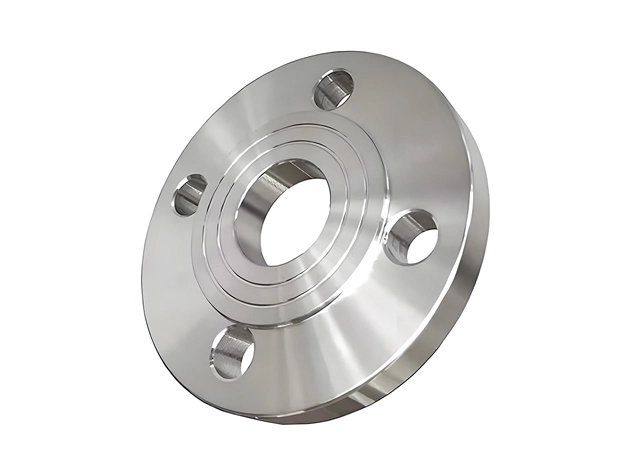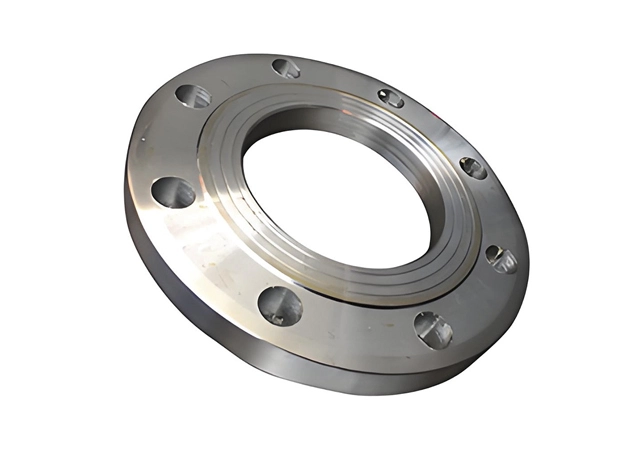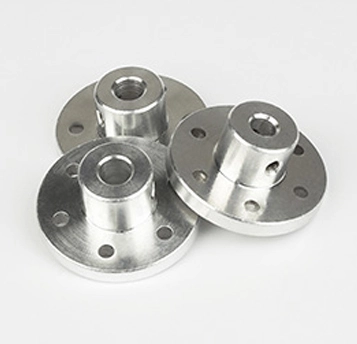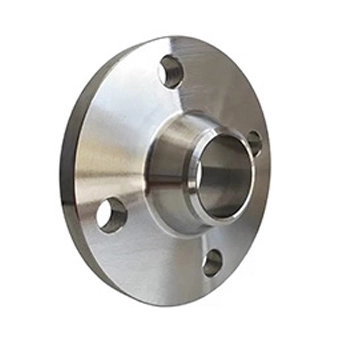What is Carbon Steel Flange
Carbon steel flanges are mechanical components made of carbon steel materials and are mainly used for connecting pipes, valves, pumps and other equipment in piping systems. They have a circular shape with holes evenly distributed on the periphery for bolting connections.
Carbon steel flanges offer good strength and durability to withstand certain pressure and temperature conditions. They can provide reliable sealing and connection performance, ensuring the tightness and stability of the piping system.
Carbon steel flange is easy to install and maintain, they are widely applied in various industrial fields such as oil and gas, chemical engineering, water supply and drainage, and are crucial for the construction and operation of piping systems.
Types of Carbon Steel Flange
| Type of Flange | Features | Typical Applications |
| Weld Neck Flange | Long tapered hub, welded to the pipe, excellent for high-pressure systems. | High-pressure pipelines, oil and gas, petrochemical. |
| Slip-On Flange | Slides over the pipe and welded, easy to install, cost-effective. | Low-pressure systems, water treatment, HVAC. |
| Socket Weld Flange | Socket for pipe insertion, fillet welded, ideal for small-diameter pipes. | Small-diameter high-pressure systems, chemical plants. |
| Blind Flange | Used to seal pipe ends, no bore, prevents flow. | Pipeline testing, vessel closures, maintenance. |
| Threaded Flange | Internal threads for pipe connection, no welding required. | Low-pressure systems, air, water, and gas lines. |
| Lap Joint Flange | Used with a stub end, allows for easy alignment and disassembly. | Systems requiring frequent dismantling, food industry. |
| Spectacle Blind Flange | Combines a blind flange and a spacer, used to isolate pipeline sections. | Pipeline isolation, maintenance, and safety. |
| Orifice Flange | Designed for orifice meters to measure flow rates. | Flow measurement in oil, gas, and water systems. |
| Expander Flange | Increases pipe size from a smaller to a larger diameter. | Pipeline systems requiring diameter changes. |
| Reducer Flange | Reduces pipe size from a larger to a smaller diameter. | Pipeline systems requiring diameter changes. |
| Long Neck Flange | Extended neck for better alignment and stress distribution. | High-temperature and high-pressure applications. |
| Flat Face Flange | Flat sealing surface, used with flat gaskets. | Low-pressure systems, cast iron equipment. |
| Raised Face Flange | Raised sealing surface, used with soft gaskets. | General-purpose applications, high-pressure systems. |
| Ring-Type Joint (RTJ) Flange | Uses a metal ring gasket for high-pressure and high-temperature sealing. | High-pressure and high-temperature systems, oil and gas. |
Advantages of Carbon Steel Flange
High Strength: Carbon steel flanges can withstand high pressure and mechanical stress.
Cost-Effective: More affordable compared to stainless steel or alloy steel flanges.
Durability: Long service life in various environments.
Versatility: Suitable for a wide range of applications and industries.
Easy Maintenance: Allows for easy assembly, disassembly, and inspection of piping systems.
Standards of Carbon Steel Flange
ASME/ANSI B16.5: Covers dimensions, pressure ratings, and tolerances for pipe flanges and flanged fittings.
ASME/ANSI B16.47: Standard for large-diameter flanges.
ASTM A105/A350/A694: Material standards for carbon steel flanges.
DIN EN 1092-1: European standard for flanges.
JIS B2220: Japanese industrial standard for steel pipe flanges.
ISO 7005: International standard for flanges.
Material Grade of Carbon Steel Flange
ASTM A105: Standard specification for carbon steel forgings for piping components, suitable for ambient and high-temperature service.
ASTM A350 LF2: Low-temperature carbon steel flange material for sub-zero applications.
ASTM A694: High-yield carbon steel flanges for high-pressure pipeline systems.
ASTM A36: General-purpose carbon steel used for low-pressure applications.
Connection of Carbon Steel Flange
Welded connection: Butt weld flanges are used for high - pressure scenarios, while socket weld flanges suit small - diameter pipes. They provide strong and reliable joins with good sealing.
Bolted connection: Slip - on flanges, easy to install and maintain, are for low - pressure systems. Threaded flanges are convenient for frequent disassembly and adjustment.
Blind flange connection: Blind flanges, bolted to pipe flanges, are used to block pipe ends, useful for pipeline shutdown, maintenance or isolation.
Applications of Carbon Steel Flange
Oil and Gas: For pipelines, refineries, and offshore platforms.
Petrochemical: In chemical processing plants and pipelines.
Power Generation: For boilers, turbines, and steam systems.
Water Treatment: In water distribution and treatment systems.
Construction: For structural and industrial piping systems.
Shipbuilding: In marine piping systems.
HVAC: For heating, ventilation, and air conditioning systems.

 EN
EN









